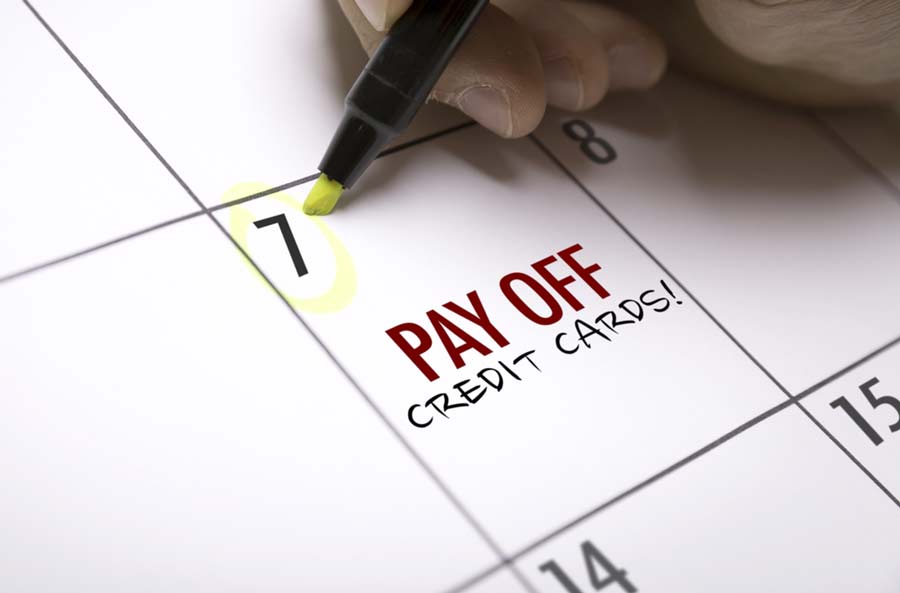Americans who carry balances month over month should be alarmed by the interest they’re paying: As the Federal Reserve persists in incremental hikes, credit card rates keep surging.
But there’s a way out: Consolidate your balances under a single, low- or zero-interest alternative.
There are several ways to do this, including refinancing your home and using some of the equity to pay off your credit cards, or taking out a personal loan (collateralized or not). Each alternative probably offers far lower interest rates than you’re paying now, but even the best debt consolidation option will likely cost you more than DIY alternatives.
But if you recoil from raising the balance you owe on your home and you don’t want the hassle of applying for a personal loan, imagine curing your credit card woes with … wait for it … another credit card.
Yep. We’re not just making this up. If you qualify, there are credit cards available that offer zero-percent interest, usually for a 12-18 month period.
More than four in 10 cardholders (44%) had balances in the final quarter of 2017, American Bankers Association research shows. Even as average interest rates push ever higher week after week — to 16.81% as recently as June 24, 2018, up from 13.15% a year earlier, according to tracker CreditCard.com — those willing to do their homework can find plenty of opportunities to slash the fee that never sleeps.
Believe it: There are credit card companies that want your business so badly they’re willing to let you transfer your balances for astonishingly low, and sometimes even zero percent interest rates … at least for a while. Sound intriguing?
Let’s check it out.
Shopping Low-to-Zero-Rate Credit Cards
The hunt for a low-or-zero-rate credit card that allows balance transfers begins at your favorite internet search engine. Type in “best deals on low rate credit card” and let the data-crunching magic happen.
Who knew, right?
Hold on. Your work has only begun. Now you really need to do some research. Does your credit rating match up with the requirements of the card that caught your eye? Some zero-interest cards require good credit — a FICO score of 670 and above.
How long is the low/zero interest rate grace period? (Don’t settle for less than a year.) Do you think you can pay off your consolidated balance by then? What’s the interest rate after the introductory period lapses?
Do you want some sort of rewards perk built in? Some low/zero cards with balance transfer options also offer cash back or travel rewards or other sweeteners. You don’t want to leave opportunity on the table.
Luckily, done properly, your search will turn up dozens of lists of “Best Low Interest Credit Cards of 2018.” Browse at least a few, and make certain you’re not looking only at the advertised or promoted lists. Keep an eye out for lists collected by reputable publications.
Weighing Transfer and Annual Fees
Some card-issuers bake upfront costs into their deals, primarily transfer and annual fees. These, as we shall see, are not chiseled in stone.
Just be wary of them. Transfer fees often range from 3% to 5%. If you’re planning to move $5,000 to a low/zero-rate card and the issuer won’t budge, that could mean between $150 to $250 out of your pocket right away.
Similarly, some banks want annual fees. You’ll want a card with no annual fee, or a bank that is willing to waive it.
Pros and Cons of Consolidation Via Credit Card
While self-evident, the advantages of a low- or zero-rate credit card that allows balance transfers are worth reiterating.
You’ll be snaring a lower rate on existing balances. If those balances are anywhere near the average reported by credit bureau Experian — $6,354 at the end of 2017 — you have a chance to save around $1,000, or about $90 a month.
Imagine plowing $90 a month — money you’re already spending — into your balances. With a disciplined budget, this time next year you could be $1,000 closer to being in the black without spending an extra dime.
By transferring your balance(s), you’ll have an opportunity to close those cards that carry bad terms — high rates, stiff annual fees, or both — and move on.
You’ll even be applying the United States motto to your financial condition: E pluribus unum. Out of many (credit card balances), one. By consolidating your debt, instead of several payments on several cards each month, you’ll have one payment to one issuer.
It’s not all roses and peach ice cream, though. There are potential pitfalls.
Make certain you’re getting a better interest rate. As mentioned above, the best rates go to those with the best credit scores. If your score has bruises, you might not qualify.
We noted the balance transfer fee above. When considering the downsides of the low/zero option, an apples-to-apples comparison demands you factor in the transfer fee and annual fee, if any, to determine whether you’re getting a good deal. If the low/zero rate issuer requires a bundle up front, you might be better off leaving your balances where they are and negotiating with the card companies for better terms — see below.
A balance transfer has the potential to ding your credit score. Any time you apply for and open a new credit card account, the credit bureaus pay attention. They also take note whenever your balances are above 30% of your credit limit.
In other words, say you’re transferring the national average of about $6,300, and the low/zero card issuer gives you a credit limit of $10,000. For every month you’re above $3,000, the Big Three (Experian, TransUnion and Equifax) will drop your score. Get those points back by paying down your balance in a timely fashion.
Finally, the ultimate downside: Getting deeper in debt. Once those balances have been transferred, you suddenly will have cards with wide open spaces. You may be tempted to reward yourself. Don’t be like Oscar Wilde, who wrote, “The only way to get rid of temptation is to yield to it.”
Don’t mess up a good thing by succumbing to old bad habits guided by the facetious musings of 19th century playwrights. Closing those old accounts should go hand-in-hand with the clean slate you’ve created with your balance transfers.
Before You Commit to a New Card
Know this before you plunge into a new card gambit: Your existing rates probably are negotiable.
No foolin’.
As the economy continues to purr and consumer confidence practically swaggers, this latest Era of Good Feelings means service providers are astonishingly eager to sweeten arrangements with their current customers.
A creditcard.com survey revealed simply calling the issuer can result in substantial savings.
- 90% got late payment fees waived
- 80% got annual fees reduced or eliminated
- Nearly 70% got their APR (annual percentage rate) reduced
As you would expect, better customers have the best chance to win the bank’s favor: those who make payments on time — especially those who threaten to stop using the card or close their accounts.
Promotional period ends, balance remains: What then?
Besides the promotional interest rate, two key points must be settled before you commit to a balance-transfer card.
The first — How long is the promotional period? — we covered above. Shoot for at least a year; some cards will go as long as 18 months. Twenty-one months is not unheard of.
The second — What’s my APR after the promotional period? — is paramount. Most balance-transfer cards have a range of rates. Know where yours is likely to fall.
Wait! you’re thinking. If I still have balances after the teaser rate expires, I’ll just do another low/zero-rate transfer. This is like using your third wish to ask the Genie for more wishes: There are grave consequences.
Just as with high balances, the Big Three take a dim view of consumers who roll over high-debt balances. Accordingly, lenders will regard you as a bad risk, which becomes problematic when you want to borrow for a house or a car.
My Credit’s Lousy; Can I still Get In?
Borrowers with credit scores lower than 600 will find it difficult to qualify for a balance-transfer card with a low/zero APR. Sadly, these consumers are simply not a good risk for additional unsecured credit. Instead, you might qualify for a secured card, where you put up something of value against the balance.
Instead, if you’re someone with high-interest debt, substantial balances, and bruised credit, your best bet for getting a handle on your financial future might well include an appointment with a nonprofit credit counseling service.
These experts know how to work with your creditors, and will be able to help you construct a budget plan to get your financial house in order. With guidance and a little discipline, you may never need a low/zero-APR balance-transfer credit card.

7 MINUTE READ
Home » InCharge Blog »
Sources:
- Baze, E. (2018, June 20) Historic credit card interest rates chart. Retrieved from https://www.creditcards.com/credit-card-news/historic-credit-card-interest-rate-chart.php
- Shell, A. (2018, May 4) Ouch! Average credit card rates hit new high. Retrieved from https://www.usatoday.com/story/money/personalfinance/2018/05/04/average-interest-rate-new-credit-cards-hits-record-high/577238002/
- Irby, L. (2018, Feb. 27) Pros and Cons of a Credit Card Balance Transfer. Retrieved from https://www.thebalance.com/pros-and-cons-of-a-credit-card-balance-transfer-960203
- Latimer, J. (2018, May 17) 8 Pros and Cons of Credit Card Debt Consolidation. Retrieved from https://studentloanhero.com/featured/does-debt-consolidation-hurt-your-credit-pros-cons-card/
- Andriotis, A. (2017, March 27) Now Negotiable: Credit-Card Annual Fees. Retrieved from https://www.wsj.com/articles/now-negotiable-credit-card-annual-fees-1490587260
- Bond, C. (2018, May 29) What Is a Good Credit Card APR? Retrieved from https://creditcards.usnews.com/articles/what-is-a-good-credit-card-apr
- Warnick, M. (2017, Feb. 6) 9 things you should know about balance transfers. Retrieved from https://www.creditcards.com/credit-card-news/help/9-things-you-should-know-about-balance-transfers-6000.php
- NA (2018, May 26) Balance transfer options for low credit scores. Retrieved from https://www.finder.com/balance-transfer-credit-card-for-bad-credit

















